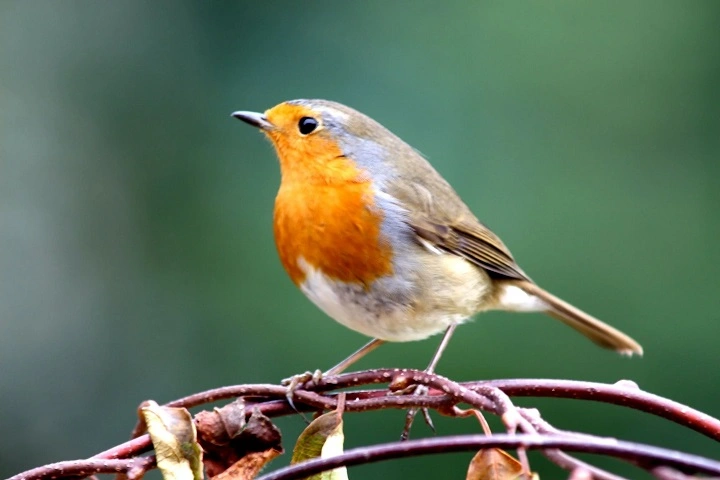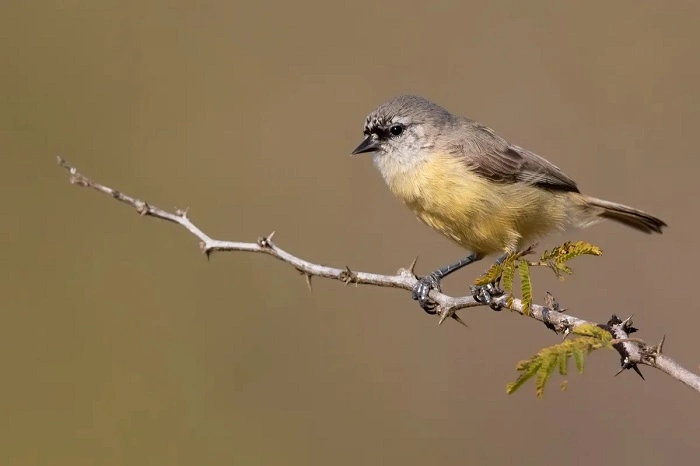They flash like commas in the air. Quick, bright, surprising. We call them tiny birds—minute fliers with huge voices and brave hearts. Maybe you’ve seen them thread through hedges, hover at flowers, or vanish into a fist-size nest. Today we’ll map their world. What counts as small. Where they live. How they eat, sing, and raise young. And how you can welcome tiny birds to your yard without fuss. Short steps. Clear wins. Ready to let your garden feel alive?
What Counts as Tiny Birds? Size, Weight, and Wonder
Not a strict category, but a useful picture. Tiny birds are the smallest songbirds and nectar-lovers you’re likely to meet.
A Practical Definition
- Length: often 6–12 cm (2.4–4.7 in).
- Weight: a teaspoon of sugar—sometimes less than 6 grams.
- Shape: compact, round bodies; fast wings; fine bills.
Why so small? Speed and efficiency. Tiny birds burn energy like sparks. That means constant foraging, agile flights, and short rests between sprints.
How Small Helps
- Evasion: Threading branches where larger predators can’t follow.
- Foraging: Reaching insects in needle clusters, tiny flowers, narrow crevices.
- Nesting: Tucking homes into spaces the size of a teacup.
Where Tiny Birds Live—and Why Habitat Edges Matter
You’ll find tiny birds in forests, scrublands, wetlands, deserts, and cities. They love edges—places where shrubs meet trees, and flowers meet open air.
Woodlands and Shrublands
- Kinglets comb conifers.
- Wrens dive through brambles.
- Bushtits weave social flocks across hedgerows.
Urban and Suburban Spaces
Your street can be a corridor. Mixed-height plantings—trees, shrubs, ground cover—create layers. Layers create food and shelter. That’s a doorway for tiny birds.
Tropical and Desert Niches
- Hummingbirds sip nectar in cloud forests and gardens.
- Verdins slip through desert thorn with quiet precision.
Small size, big adaptability.
Songs and Calls: The Loud Mystery of Small Voices
How can something so small sing so strongly? Air under pressure. Fine control. Practice at dawn.
Why They Sing
- Claim space.
- Attract mates.
- Keep flocks together.
For tiny birds, sound is a map and a promise. The dawn chorus is their roll call.
How to Listen
- Short, bright phrases.
- Rapid trills.
- Repeated motifs.
Stand still. Breathe. Let the canopy teach you.
What Tiny Birds Eat: Fuel for a Fast Life
Fast bodies need constant fuel. Diets shift with seasons and habitat.
Insect Specialists
Many tiny birds are insectivores. Mites, aphids, caterpillars, gnats. They glean from bark, hover near leaves, or sally midair for a quick catch.
Nectar and Sap
Hummingbirds drink nectar; their tongues unfurl like tiny brushes. In lean months, some species sip from sap wells or turn to small insects for protein.
Seeds and Berries
Kinglets take spiders and larvae; wrens grab beetles; butts nibble tiny seeds. A flexible palate keeps tiny birds resilient when weather turns.
Nesting: Engineering on a Thumbprint
Their homes are miracles of patience. Elastic cups. Spider silk. Lichen camouflage. Precision in miniature.
Nest Types
- Elastic cups: Hummingbirds use spider silk to stretch as chicks grow.
- Domed nests: Wrens and bushtits craft cozy, hidden chambers.
- Cavity users: Small species take over old woodpecker holes or natural cracks.
Clutch Size and Care
Small bodies, big effort. Several eggs. Rapid growth. Both parents often feed. For tiny birds, timing is everything—food-rich weeks decide success.
A Global Sampler of Tiny Birds
Meet a few small marvels you can look for—or read about with delight.
Ruby-throated Hummingbird
A coin-sized hoverer. Iridescent throat on males. Hearts like drums, wings like whispers.
Goldcrest and Firecrest
Europe’s feather-light jewels. They sweep conifers, calling as if from inside the needles.
Bushtit
Social and soft-spoken. Communal roosting on cold nights. Nests like hanging purses stitched from plant fluff.
Winter Wren
A round spark in dim understory. Tail cocked, song impossibly complex. Proof that tiny birds can sound like symphonies.
Verdin
Desert threader. Compact, clever, resilient. Weaves insulated nests against heat and chill.
Weebill
Australia’s smallest resident. Name from its tiny bill. Big appetite for tiny insects.
Tiny Birds in Cities: How to Be a Good Neighbor
Cities can be kind—if we make them so. You can turn a balcony or yard into a refuge.
Plant the Ladder
- Trees: native canopy for insects and cover.
- Shrubs: nectar, berries, nesting spots.
- Ground layer: leaf litter, native flowers, quiet corners.
Water, Quiet, Shelter
Shallow water sources. A brush pile hidden along a fence. Less lawn, more life. This is how tiny birds find rest in busy places.
Pesticide Caution
Fewer chemicals, more insects. More insects, healthier broods. It’s a simple, powerful exchange.
Threats and How to Reduce Them
Small bodies meet big risks. You can lower the odds.
Windows
Millions of birds die in collisions. Add visible markers, screens, or decals on glass. Shift feeders either very close (<1 m) or far (>9 m) from windows.
Outdoor Cats
Keep cats indoors or build a “catio.” Bells don’t solve it. Only separation does.
Habitat Loss
Every shrub matters. Replace one ornamental with a native. That’s a pantry for tiny birds.
Climate Swings
Unpredictable springs can starve nestlings. Early blooms, late frosts. Resilience starts with diverse plantings that spread risk across seasons.
Watching Tiny Birds: Skills, Tools, and Timing
Birding is attention dressed as joy. Here’s how to see more.
Fieldcraft Basics
- Move slowly.
- Scan edges and mid-story foliage.
- Listen before you look.
Light and Time
Dawn is a gift. Evenings too. Low-angle light outlines movement and color.
Helpful Tools
- Lightweight binoculars.
- A pocket guide or app.
- A small notebook—notes sharpen memory.
Create a Tiny-Bird-Friendly Yard in 3 Steps
Start small. Stay steady. Let the changes add up.
Step 1: Plant for Food
Native flowers for nectar. Berry shrubs. Insect-rich trees like willows, oaks, or bottlebrush depending on your region.
Step 2: Add Water
A shallow dish or bubbler. Clean often. Movement attracts; safety keeps them coming back.
Step 3: Protect the Quiet
Leave some leaf litter. Delay heavy pruning until after nesting. Keep a corner wild. That’s where tiny birds will disappear and then reappear—safe, fed, calm.
Field ID Clues: Quick Anchors for Beginners
- Size of a leaf.
- Constant tail flicks or wing quivers.
- High, fast trills.
- Feeding style—gleaning, hovering, or short dashes.
- Behavior in flocks—bushtits move like a breeze through hedges; kinglets hover at needle tips.
Why Tiny Birds Matter
They are threads in the fabric. Pest control, pollination, seed movement. More than that, they’re daily medicine. A flash of green fire at a flower. A song that lifts the morning. When tiny birds thrive, the neighborhood feels awake.
FAQs: Tiny Birds
What birds are considered tiny?
Species like hummingbirds, kinglets, bushtits, goldcrests, and small wrens—very short length and ultra-light weight.
What do tiny birds eat most of the year?
Mainly insects and spiders; some take nectar or tiny seeds, shifting diet with seasons.
How can I attract tiny birds to a small space?
Use native shrubs, a shallow water source, and avoid pesticides; add flowers for nectar.
Why are tiny birds so active?
Small bodies burn energy fast. They must forage often to keep warm and fuel flight.
How do I keep tiny birds safe near windows?
Add visible markers or screens, and place feeders very close to windows or far away.
They weigh as much as a letter. Yet they sound like an orchestra. In a loud world, tiny birds teach economy—of motion, of song, of need. Offer them layers, water, and a little peace. Trim less. Plant more. Watch them write bright commas across your morning. And let that small joy carry you through the day.





